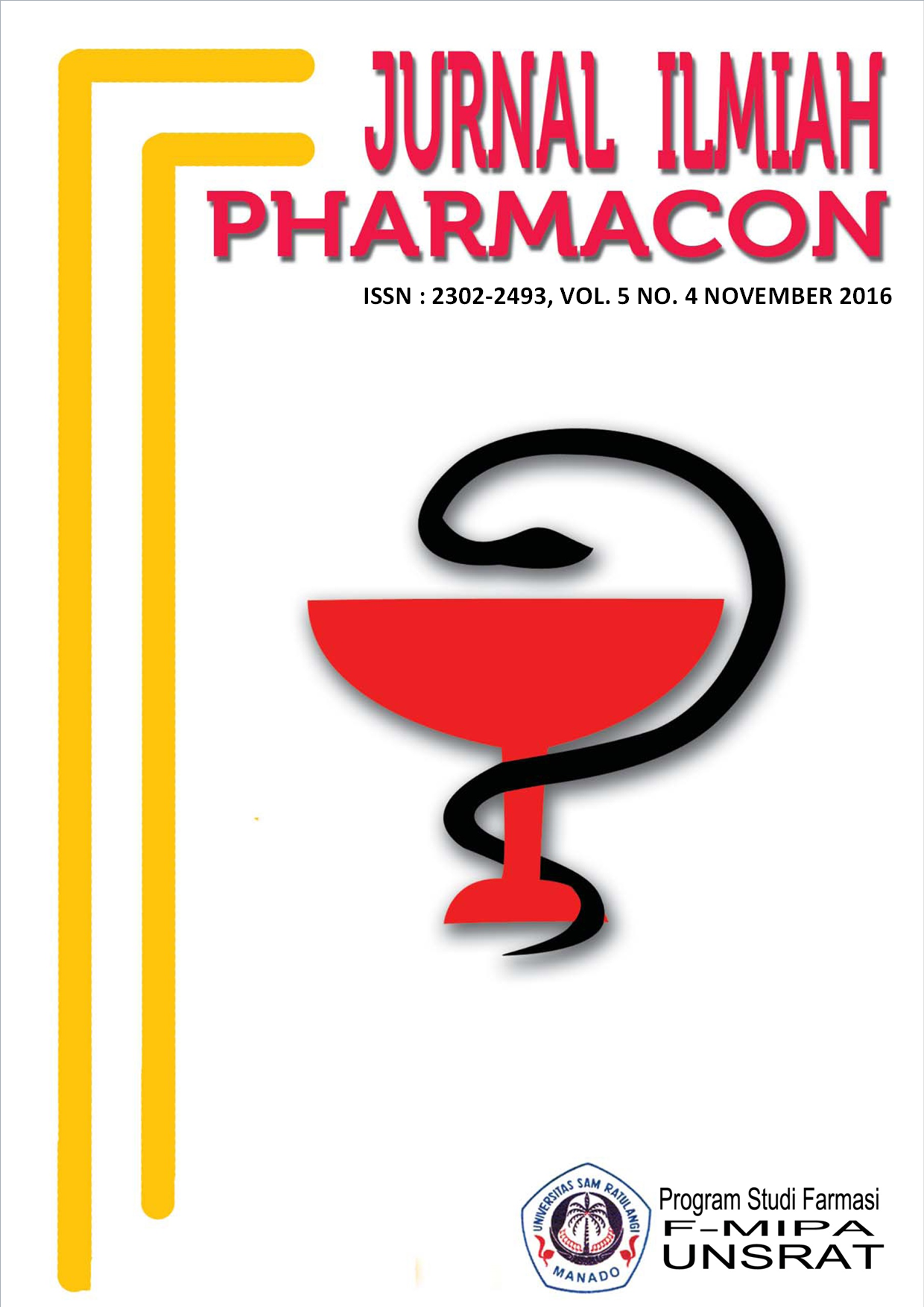ANALISIS BORAKS PADA NUGGET OLAHAN YANG DIPRODUKSI DI KOTAMOBAGU
DOI:
https://doi.org/10.35799/pha.5.2016.14004Abstract
ANALISIS BORAKS PADA NUGGET OLAHAN
YANG DIPRODUKSI DI KOTAMOBAGU
Â
Fitriyani Dolot), Fatimawali1), Nancy Pelealu1)
1)Program Studi Farmasi FMIPA UNSRAT Manado, 95115
ABSTRACT
The purpose of this study is to identify the borax on snacks nuggets produced at Kotamobagu. Sampling sites were Poyowa Kecil, PoyowaBesar, Mongondow, Kobo Kecil, MotoboiKecil and Kotobangon. Sampling was done 3 times on each processed nugget vendor as much as 20 processed nuggets. Samples were identified using a flame and colour test methods using turmeric colour paper. The results of studies on borax identification in the sample processed nugget with a flame and colour test obtained that all samples of processed nuggets do not contain harmful preservatives, such as borax. Noneed further study by UV-VIS spectrophotometry.
Keywords: Borax, Flame and Colour Test, Processed chicken nuggets, Kotamobagu.
Â
Â
ABSTRAK
Â
Tujuan penelitian ini yaitu untuk mengidentifikasi dan mengukur kadar senyawa boraks pada jajanan nugget yang diproduksi di Kotamobagu..Lokasi pengambilan sampel Poyowa Kecil, Poyowa Besar, Mongondow, Kobo Kecil, Motoboi Kecil dan Kotobangon. Pengambilan sampel dilakukan sebanyak 3 kali di tiap penjual nugget olahan sebanyak 20 biji nugget olahan. Sampel diidentifikasi menggunakan metode uji nyala dan metode uji warna dengan menggunakan kertas tumerik. Hasil penelitian percobaan identifikasi boraks dalam sampel nugget olahan dengan reaksi uji nyala dan ujii warna diketahui bahwa semua sampel nugget olahan yang diuji tidak mengandung bahan pengawet berbahaya, yaitu boraks. Sehingga tidak diadakan penelitian lanjutan dengan Spektrofotometri UV-VIS.
Â
Kata kunci : Boraks, Uji Nyala dan Uji Warna, Nugget ayam olahan, KotamobaguDownloads
Published
How to Cite
Issue
Section
License
Authors who publish with this journal agree to the following terms:
- Authors retain copyright and grant the journal right of first publication with the work simultaneously licensed under a Creative Commons Attribution-NonCommercial 4.0 International License that allows others to share the work with an acknowledgement of the work's authorship and initial publication in this journal.
- Authors are permitted and encouraged to post their work online (e.g., in institutional repositories or on their website) prior to and during the submission process, as it can lead to productive exchanges, as well as earlier and greater citation of published work (See The Effect of Open Access)










